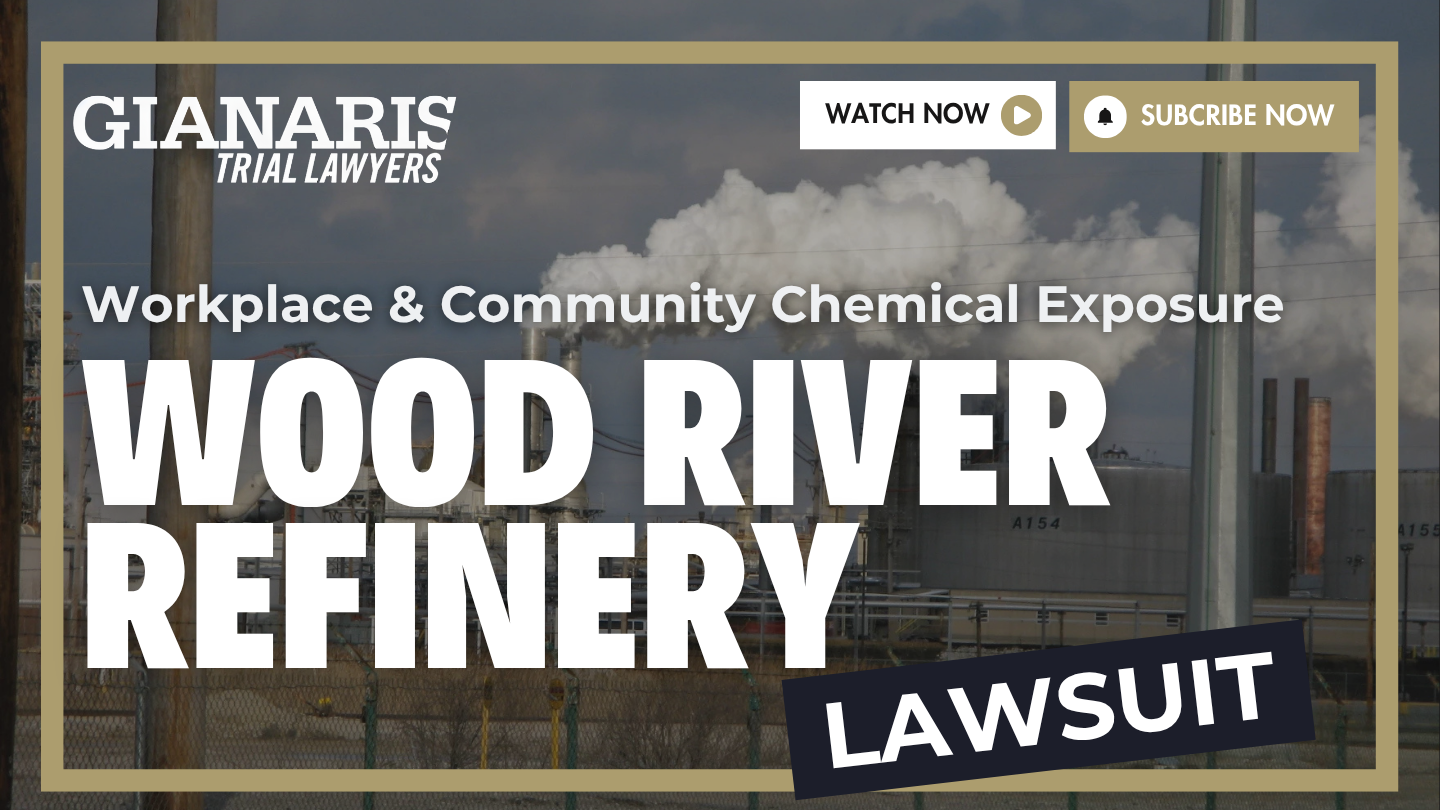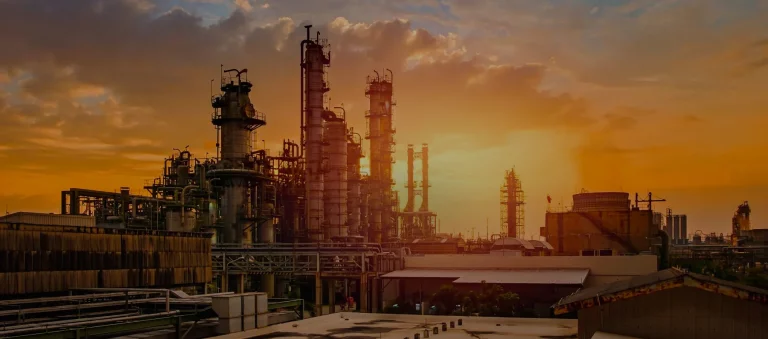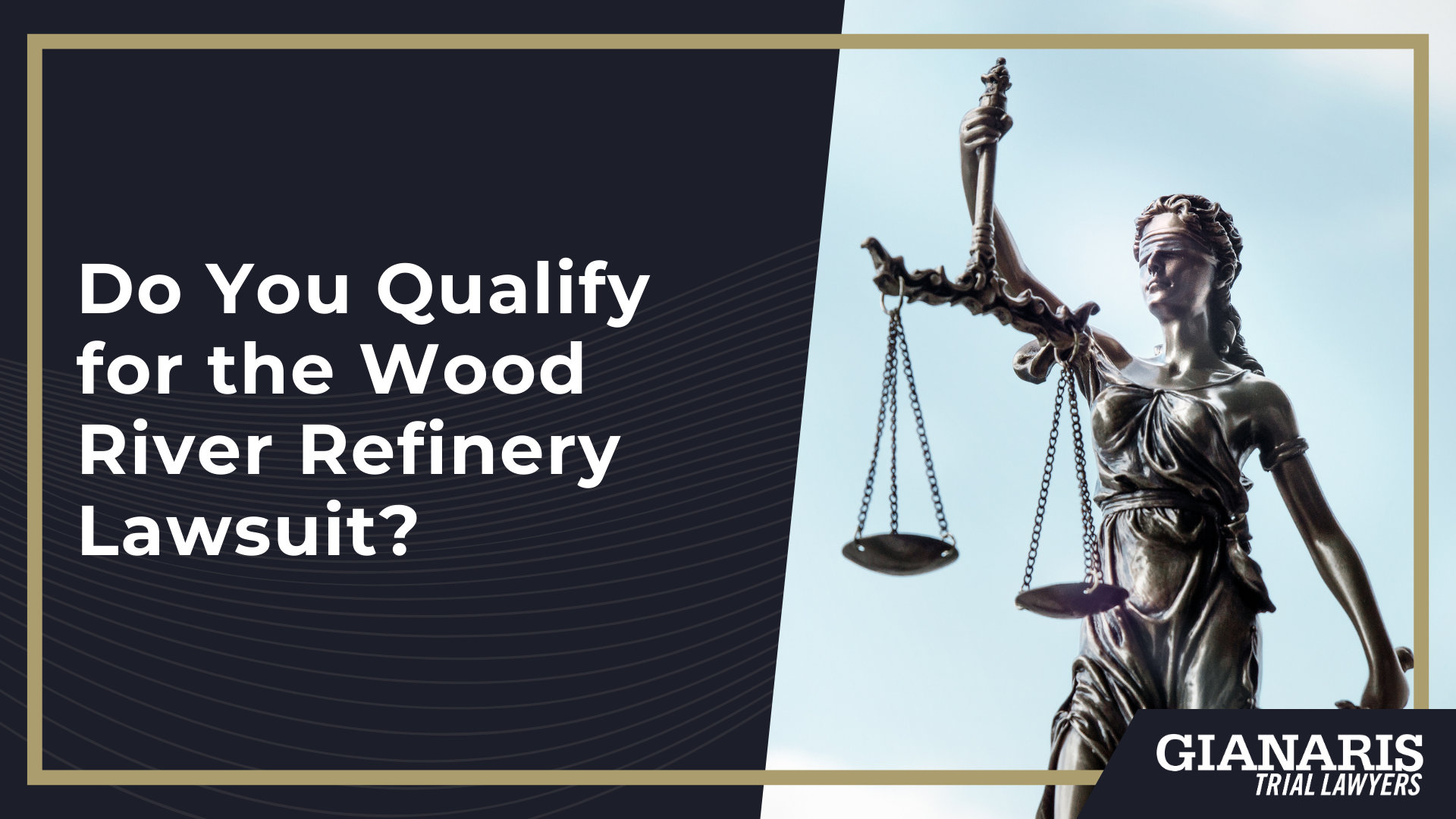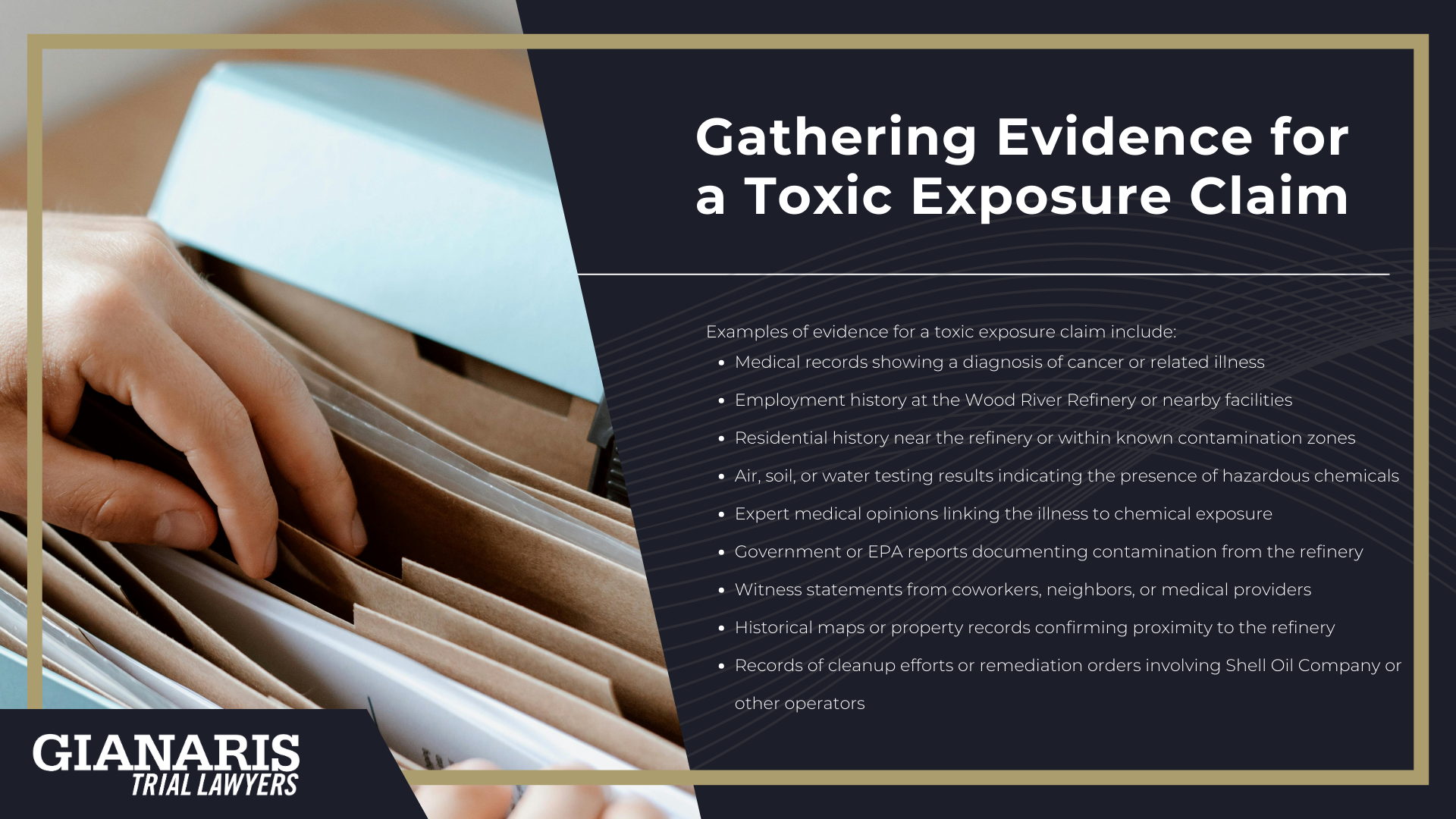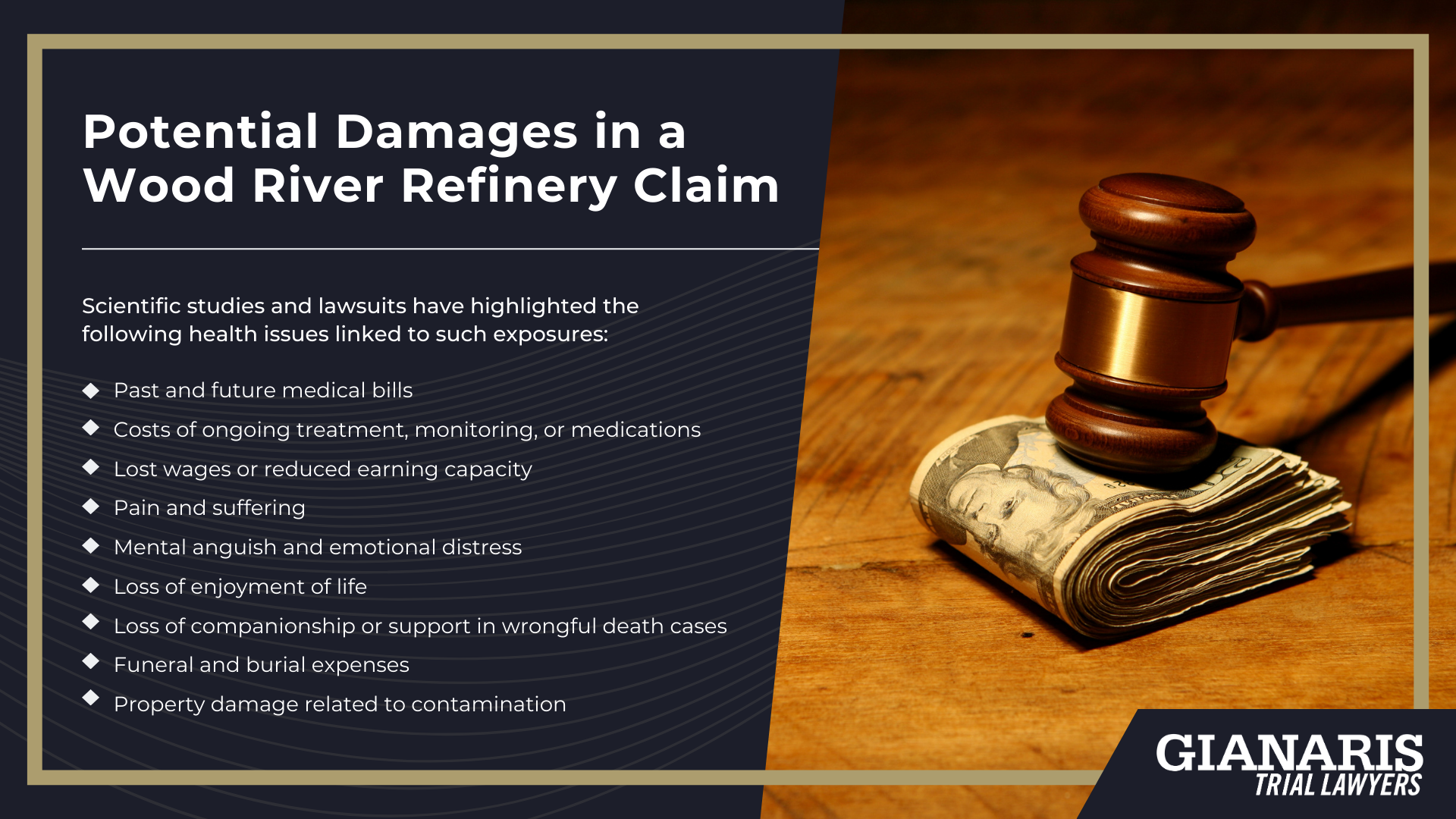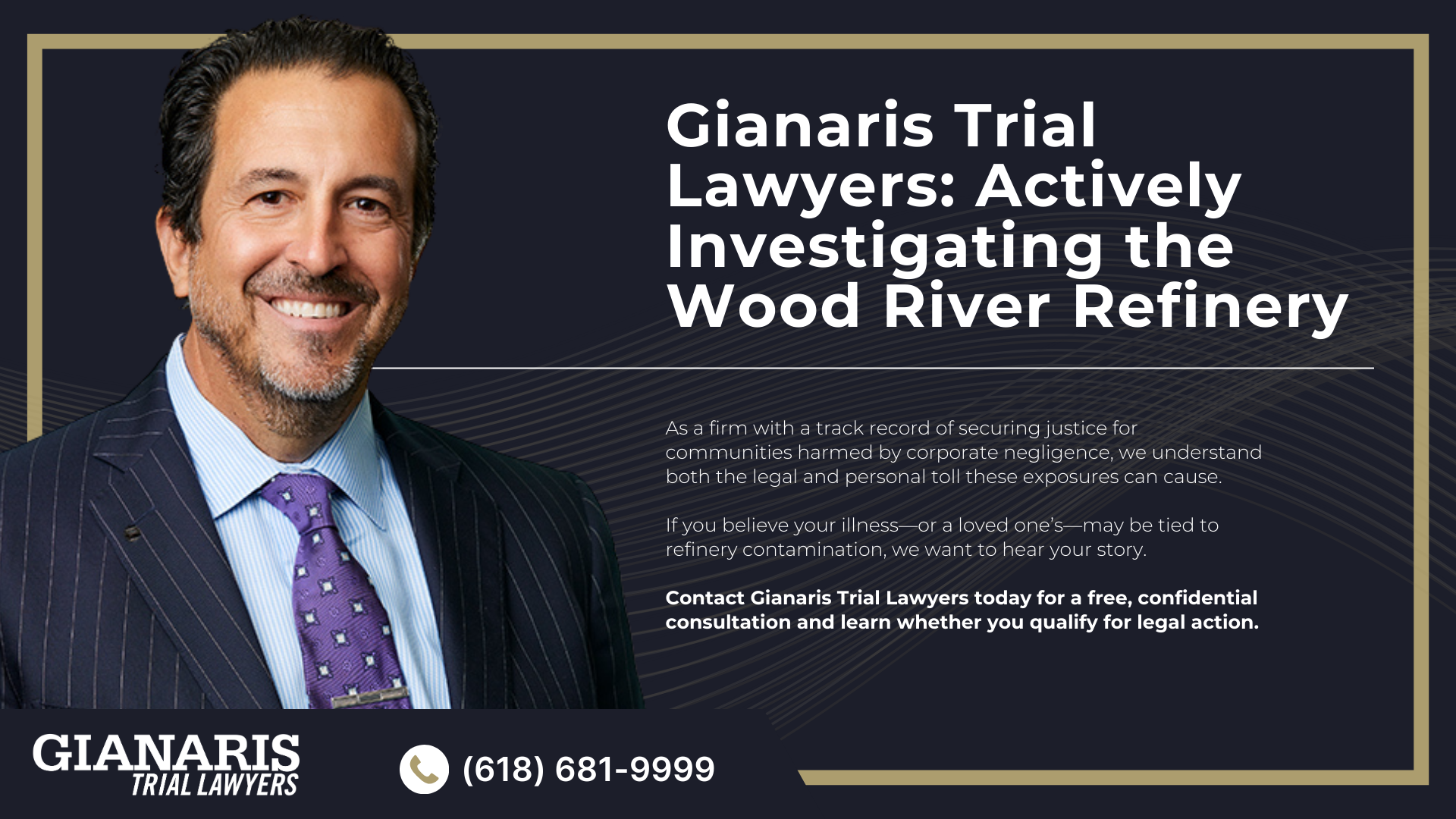The Wood River Refinery, located in Roxana, Illinois, has been a significant source of employment and economic activity for the region.
However, its operations have also led to environmental contamination, notably through the release of hazardous chemicals such as benzene, which have adversely affected both workers and nearby residents.
Benzene, a volatile organic compound found in crude oil and gasoline, is a well-established human carcinogen.
Certain health conditions have been observed among individuals living near or working at the Wood River Refinery, highlighting the potential risks associated with prolonged benzene exposure.
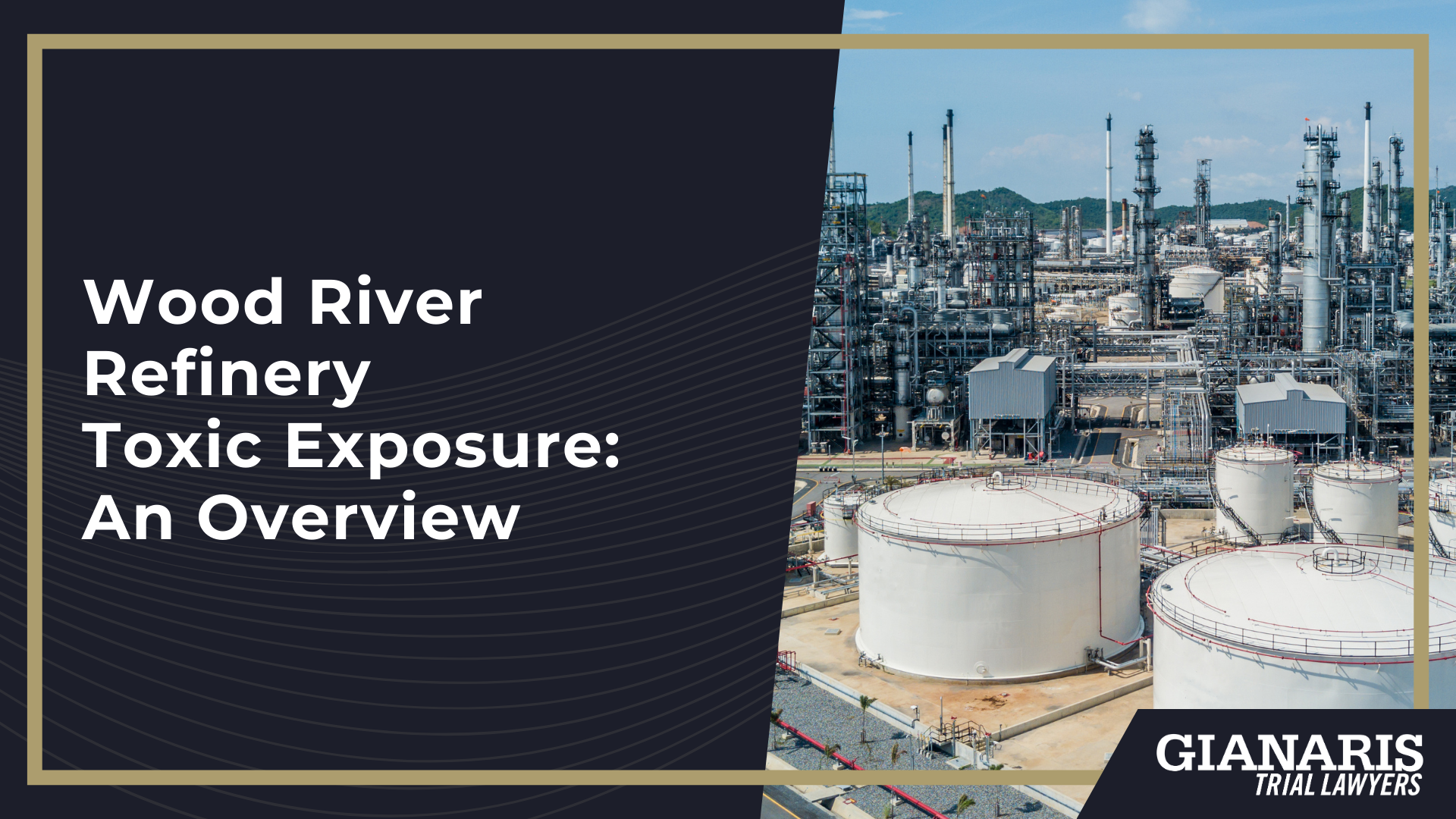
Scientific studies have demonstrated a correlation between benzene exposure and an increased risk of hematological malignancies.
For instance, research published in the Environmental Health journal indicates that even low-level exposure to benzene can elevate the risk of leukemia among refinery workers.
A systematic review and meta-analysis have confirmed the association between residential proximity to petrochemical facilities and higher incidences of blood cancers.
Lawsuits have been initiated in response to these health concerns.
In one case, a Wood River resident filed a lawsuit alleging that benzene emissions from local refineries, including the Wood River Refinery, contributed to his development of non-Hodgkin’s lymphoma.
Gianaris Trial Lawyers have also secured settlements for residents affected by underground benzene plumes, providing financial compensation for property damage and health-related issues.
Communities residing near industrial facilities like the Wood River Refinery must be informed of potential risks and have access to legal avenues for redress.
What Toxic Chemicals Have Community Members and Workers Been Exposed To?
The Wood River Refinery is a major facility that processes crude oil into various products, including gasoline, diesel, aviation fuel, and petrochemical feedstocks.
Its operations involve multiple complex processes that can release hazardous substances into the environment, affecting both workers and nearby communities.
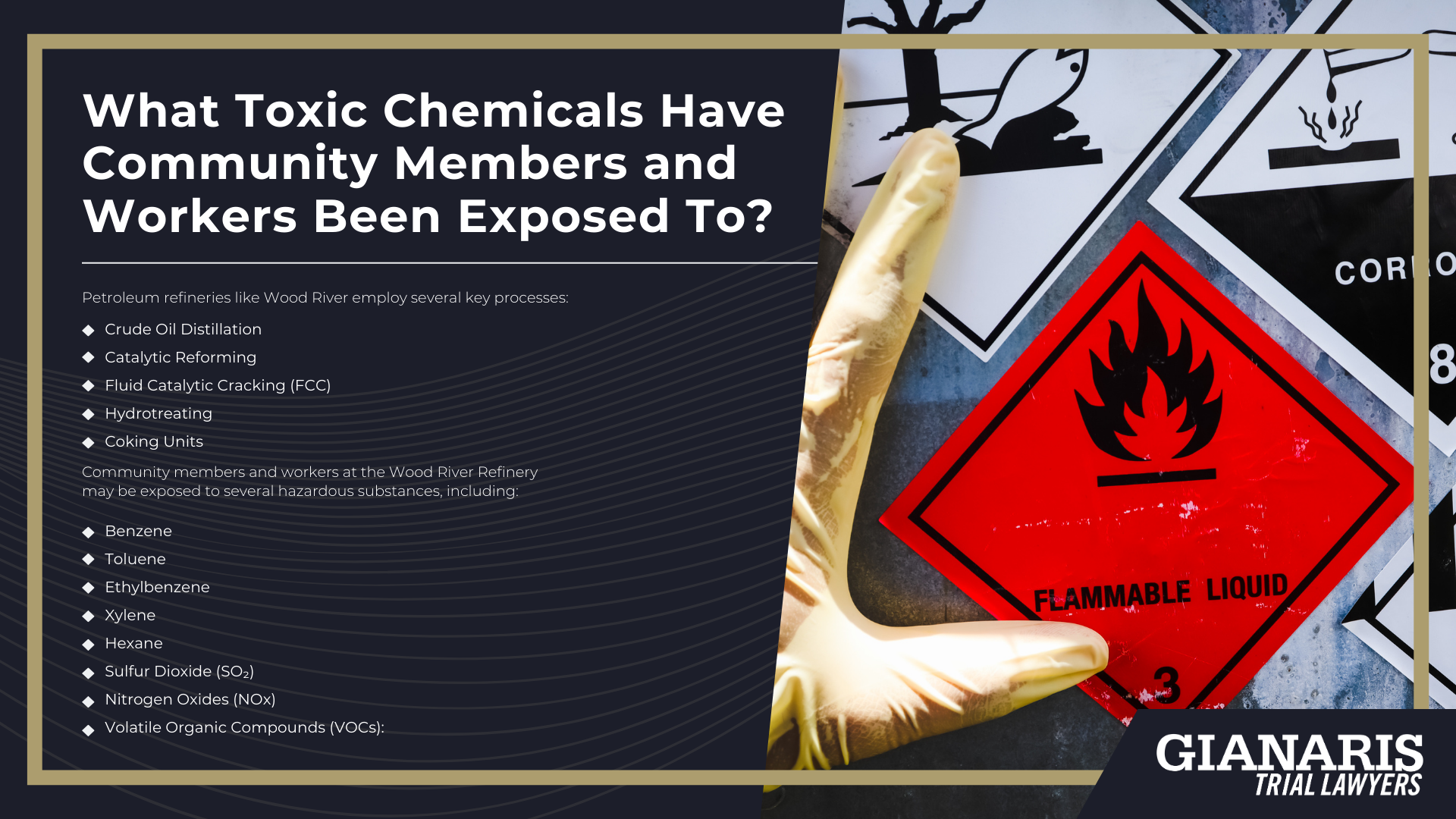
Petroleum refineries like Wood River employ several key processes:
- Crude Oil Distillation: Separates crude oil into fractions based on boiling points.
- Catalytic Reforming: Converts low-octane hydrocarbons into high-octane gasoline components, producing aromatic hydrocarbons such as benzene, toluene, and xylene.
- Fluid Catalytic Cracking (FCC): Breaks down heavier hydrocarbons into lighter ones like gasoline and olefins.
- Hydrotreating: Removes sulfur and other impurities using hydrogen.
- Coking Units: Processes residual oils into lighter products and petroleum coke.
These processes can release various toxic chemicals into the air, water, and soil, posing health risks to individuals in the vicinity.
Community members and workers at the Wood River Refinery may be exposed to several hazardous substances, including:
- Benzene: A known human carcinogen linked to leukemia and other blood disorders.
- Toluene: Can affect the central nervous system, causing headaches and dizziness.
- Ethylbenzene: Exposure may lead to respiratory issues and dizziness.
- Xylene: Can cause headaches, nausea, and respiratory problems.
- Hexane: Prolonged exposure may lead to nerve damage.
- Sulfur Dioxide (SO₂): Irritates the respiratory system and can exacerbate asthma.
- Nitrogen Oxides (NOx): Contribute to smog formation and respiratory issues.
- Volatile Organic Compounds (VOCs): A group of chemicals that can cause various health effects, including cancer.
These substances can be released through routine operations, equipment leaks, and accidental spills, leading to contamination of the surrounding environment.
Health Conditions Linked to Wood River Refinery Exposure
Exposure to toxic chemicals from the Wood River Refinery has been associated with a range of serious health conditions affecting both workers and nearby residents.
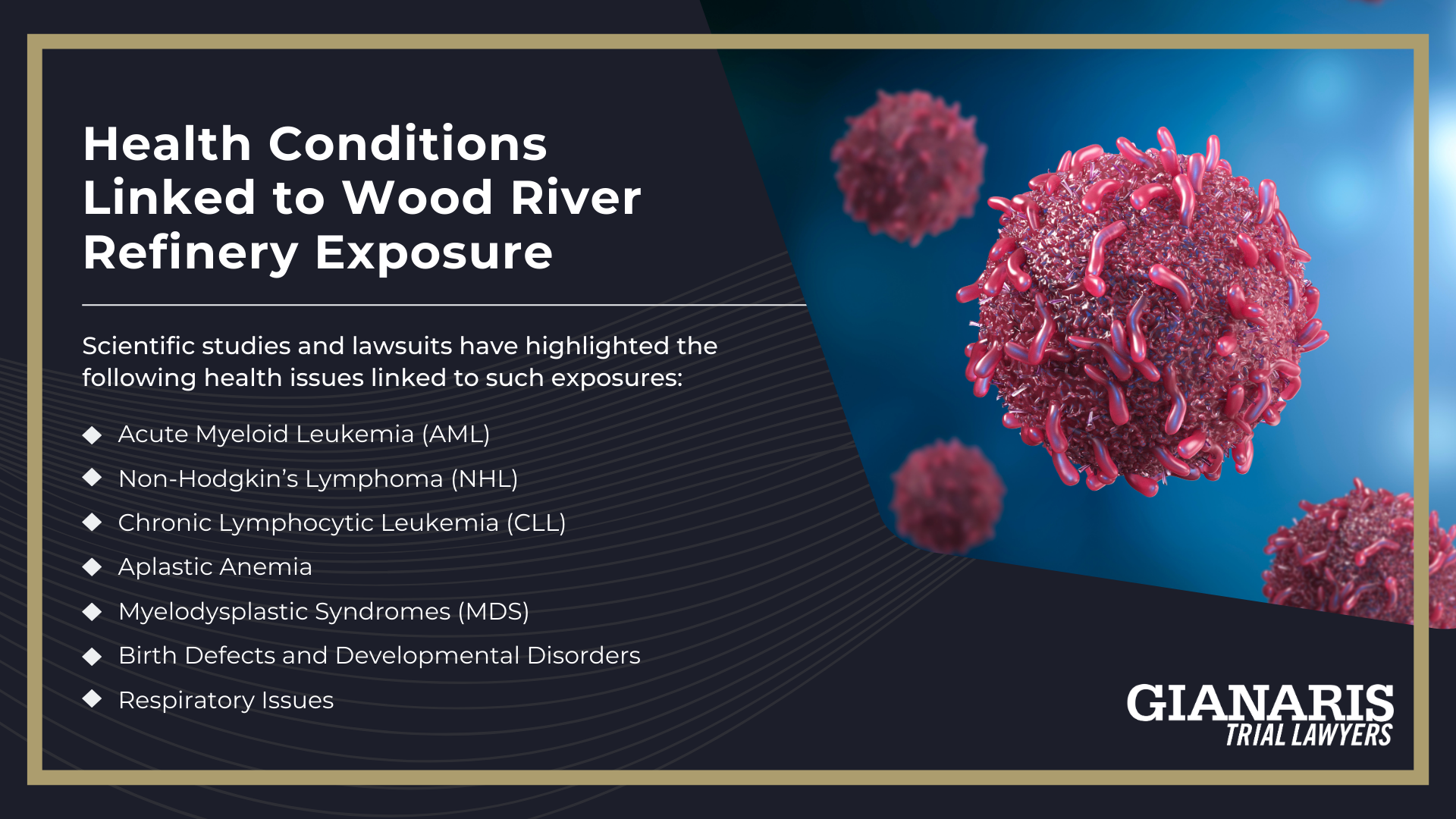
Scientific studies and lawsuits have highlighted the following health issues linked to such exposures:
- Acute Myeloid Leukemia (AML): A cancer of the blood and bone marrow, AML has been strongly associated with benzene exposure. The U.S. Environmental Protection Agency (EPA) classifies benzene as a known human carcinogen, and studies have shown that even low-level exposure can increase the risk of AML.
- Non-Hodgkin’s Lymphoma (NHL): Exposure to benzene and other volatile organic compounds (VOCs) has been linked to an increased risk of NHL. Residents living near petrochemical facilities have reported higher incidences of this cancer.
- Chronic Lymphocytic Leukemia (CLL): Long-term exposure to benzene has been implicated in the development of CLL, a type of cancer that affects the blood and bone marrow.
- Aplastic Anemia: This rare but serious condition, where the body stops producing enough new blood cells, has been associated with benzene exposure.
- Myelodysplastic Syndromes (MDS): These are a group of disorders caused by poorly formed or dysfunctional blood cells, and benzene exposure is a known risk factor.
- Birth Defects and Developmental Disorders: Communities near oil refineries have reported higher rates of birth defects and developmental issues, potentially linked to exposure to toxic emissions.
- Respiratory Issues: Inhalation of pollutants such as sulfur dioxide and particulate matter from refinery emissions can lead to chronic respiratory problems, including asthma and bronchitis.
Ongoing monitoring and legal actions aim to address these issues and provide relief to affected individuals.

